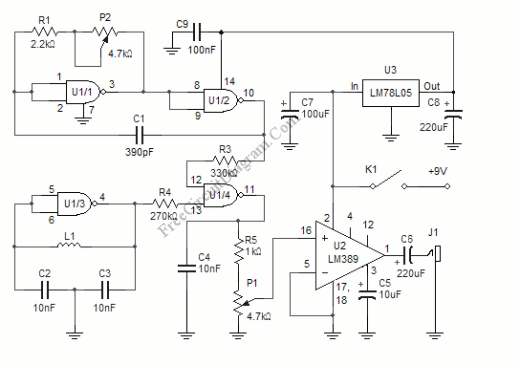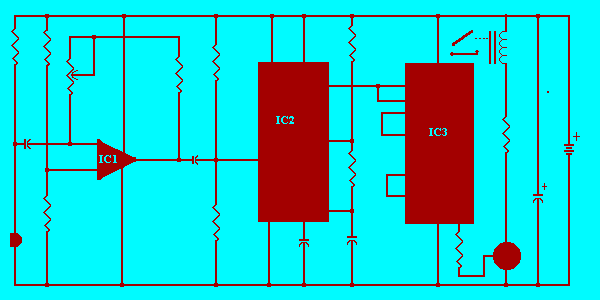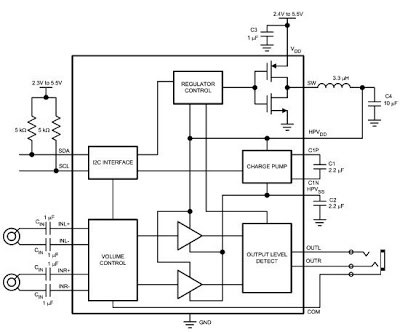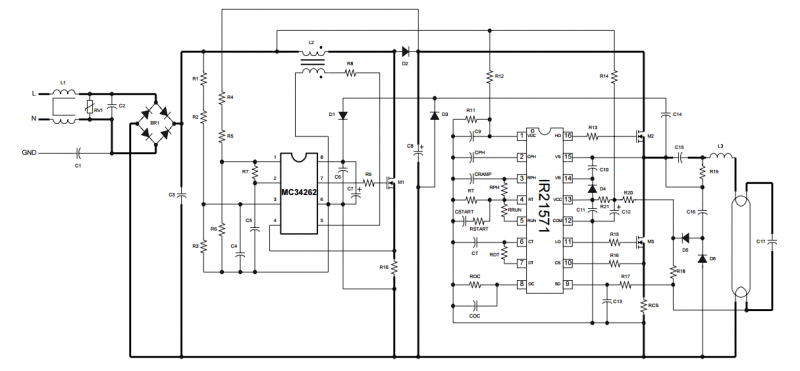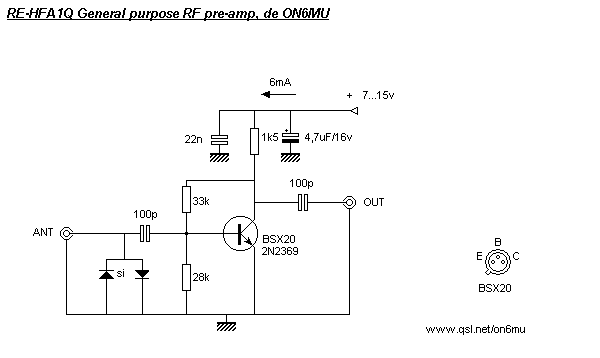
20dB VHF AmplifierCircuit Using BF197 Transistor

The following circuit illustrates a 20 dB VHF amplifier circuit diagram utilizing the BF197 transistor. Features include a simple circuit design.
The 20 dB VHF amplifier circuit is designed to amplify very high frequency signals, making it suitable for applications such as radio frequency (RF) communications, television receivers, and other VHF applications. The circuit employs a BF197 transistor, which is a high-frequency N-channel JFET known for its low noise and high gain characteristics.
The circuit typically consists of a few key components: the BF197 transistor, resistors for biasing and load, capacitors for coupling and bypassing, and possibly an inductor for tuning. The input signal is fed into the gate of the BF197 through a coupling capacitor, which blocks any DC component from the signal source. The gate resistor is used to set the bias point of the transistor, ensuring it operates in the active region for optimal amplification.
The output is taken from the drain of the transistor, which is connected to a load resistor. The load resistor determines the gain and output impedance of the amplifier. A bypass capacitor is often placed across the source resistor to enhance the gain at the operating frequency by providing an AC ground at the source terminal.
To maintain stability and prevent oscillations, feedback may be incorporated into the design. This can be achieved by connecting a portion of the output back to the input through a feedback resistor. The amplifier can be tuned for specific frequency responses by adjusting the values of the capacitors and resistors, allowing it to operate effectively within the VHF range.
Overall, this circuit provides a straightforward and efficient solution for amplifying VHF signals, making it a valuable component in various electronic systems requiring signal enhancement.The following circuit shows about 20dB VHF Amplifier Circuit Diagram. This circuit using the BF197 Transistor. Features: simple circuit, with .. 🔗 External reference
The 20 dB VHF amplifier circuit is designed to amplify very high frequency signals, making it suitable for applications such as radio frequency (RF) communications, television receivers, and other VHF applications. The circuit employs a BF197 transistor, which is a high-frequency N-channel JFET known for its low noise and high gain characteristics.
The circuit typically consists of a few key components: the BF197 transistor, resistors for biasing and load, capacitors for coupling and bypassing, and possibly an inductor for tuning. The input signal is fed into the gate of the BF197 through a coupling capacitor, which blocks any DC component from the signal source. The gate resistor is used to set the bias point of the transistor, ensuring it operates in the active region for optimal amplification.
The output is taken from the drain of the transistor, which is connected to a load resistor. The load resistor determines the gain and output impedance of the amplifier. A bypass capacitor is often placed across the source resistor to enhance the gain at the operating frequency by providing an AC ground at the source terminal.
To maintain stability and prevent oscillations, feedback may be incorporated into the design. This can be achieved by connecting a portion of the output back to the input through a feedback resistor. The amplifier can be tuned for specific frequency responses by adjusting the values of the capacitors and resistors, allowing it to operate effectively within the VHF range.
Overall, this circuit provides a straightforward and efficient solution for amplifying VHF signals, making it a valuable component in various electronic systems requiring signal enhancement.The following circuit shows about 20dB VHF Amplifier Circuit Diagram. This circuit using the BF197 Transistor. Features: simple circuit, with .. 🔗 External reference

